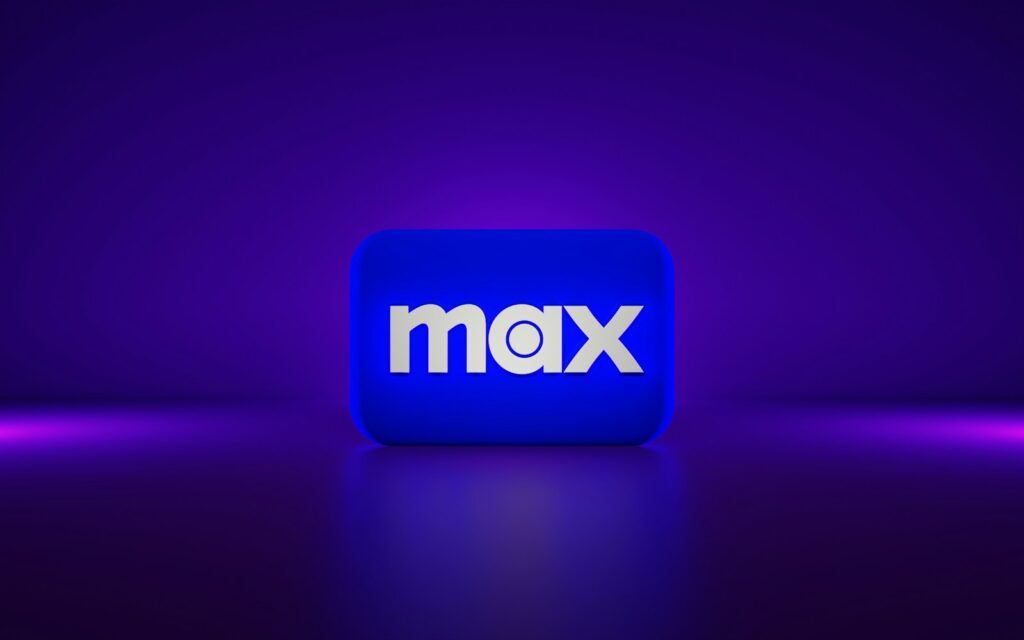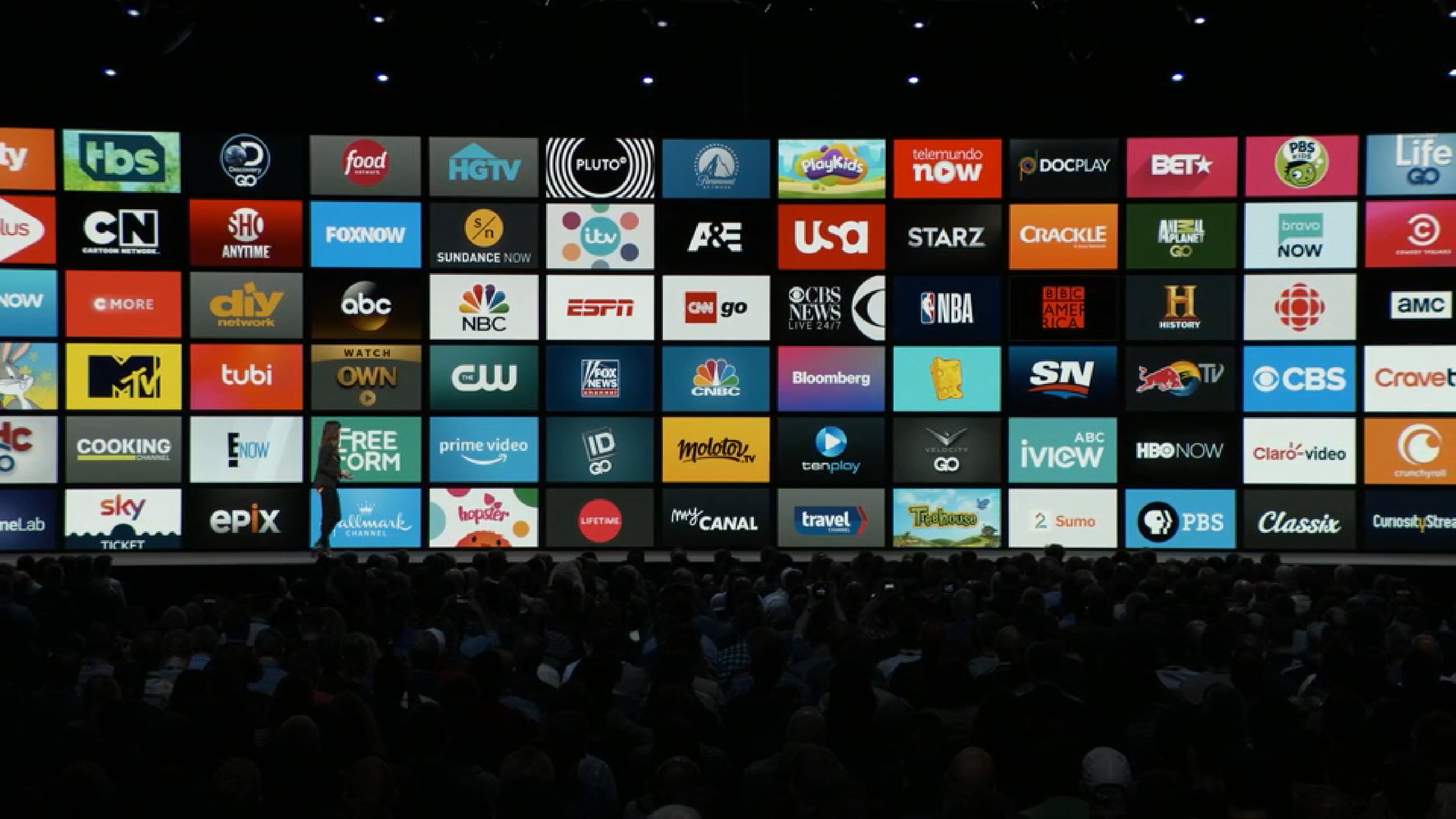
The landscape of streaming services is undergoing a significant shift, impacting how millions of viewers access their favorite shows and movies. Warner Bros. Discovery has officially joined the ranks of major streamers implementing measures against account sharing outside the primary household. Its flagship service, Max, has now debuted an “extra member add-on” feature, signaling a clear move towards generating incremental revenue and addressing the widespread practice of password sharing.
The introduction of this new feature had been anticipated for some time. Warner Bros. Discovery (WBD) had signaled last year its intention to begin restricting password sharing in the first part of 2025. This latest development brings those plans into sharper focus for subscribers.
Speaking at a Wells Fargo conference last December, JB Perrette, WBD’s CEO of Global Streaming and Games, indicated that certain Max subscribers would start receiving “some very early, gentle messaging” about password sharing by the end of 2024. This messaging campaign appears to have paved the way for the concrete changes now being rolled out.

Allowing subscribers to freely share their passwords with non-subscribers was a common practice in the streaming industry years ago. At one point, Netflix even reportedly highlighted this flexibility as a sign of its consumer-friendliness. However, as the streaming market matured and the financial stakes grew, companies increasingly recognized the potential revenue loss and began to crack down on the practice.
Netflix was a pioneer in this shift, introducing its paid password sharing setup in 2023 after testing it in several markets. This move proved to be a bellwether for the industry. Disney has also taken steps to toughen up on password sharing across its own suite of streaming services, including Disney+ and Hulu.
The Max Extra Member Add-On feature allows a primary account owner to share their Max account by inviting a friend or family member outside of their household to create a separate, standalone account. This new account operates with an adult profile under the same primary subscription.
Extra Members are provided with their own unique login credentials, distinct from those of the primary account holder. According to Warner Bros. Discovery, this feature is limited to one add-on per account. The extra member using this add-on can stream from one profile on one device at a time.

Despite having their own login and being restricted to a single stream, Extra Members are designed to receive all benefits included in the primary account holder’s base plan. This allows them to enjoy the full content library and features available to the main subscriber.
The new option costs $7.99 a month in the United States. This price applies regardless of the primary account holder’s subscription tier. For comparison, this fee is just $1 off the cost of Max’s ad-supported subscription tier, which is priced at $9.99 per month.
Alongside the Extra Member Add-On, Max has also debuted a new Profile Transfer feature. This capability allows a subscriber who is being added as an extra member to transfer an existing adult profile.

By transferring a profile, the user can bring over their existing watch history, personalized recommendations, and saved settings from their original profile to the new extra member account. This aims to provide a smoother transition for those who were previously sharing credentials and now opt for the paid add-on.
JB Perrette commented on these new features in a statement, saying, “Extra Member Add-On and Profile Transfer are two key Max advancements, designed to help viewers with a new way to enjoy our best-in-class content at an exceptional value, and offer subscribers greater flexibility in managing their accounts.” He added, “These updates provide a simple way for subscribers to add-on a new member to their account, or for existing subscribers who have users outside of their household to smoothly, and in an uninterrupted fashion, transition their profile so that extra member can continue to access Max.”
The rollout of these changes began with the United States on April 22, 2025, where the ‘Extra Member’ fee was first introduced. Warner Bros. Discovery had confirmed these password-sharing crackdown plans in late 2024 and indicated the rollout of new account restrictions would start in early 2025, beginning with the US market.
These changes from Max come after a previous price adjustment for the service. Max saw an increase of $1 a month and $10 per year back in June 2024. The implementation of paid options for previously free password sharing is essentially viewed by some as another form of price increase for subscribers who wish to continue sharing access.

The shift towards paid sharing is evident across the industry. If you’re subscribed to some of the major streaming services today, you’re likely already familiar with recent efforts to curb password sharing outside the household.
Netflix’s widely publicized password-sharing clampdown began in May 2023. This was subsequently followed by a similar crackdown from Disney Plus, which was implemented alongside Hulu in the US, Canada, and the UK in September 2024.
These actions by Netflix and Disney+ have set a precedent. As Perrette previously stated at a Morgan Stanley’s Technology, Media & Telecom conference in March 2024, WBD views these account restrictions as a “growth opportunity” for Max, particularly as the service continues its global expansion.

WBD anticipates more progress on the password sharing crackdown during 2025 and 2026. Perrette elaborated on the detection process, stating, “We will then start gradually as we get the data and start figuring out, with some explicit and implicit signals, how good we are at detecting.” He also noted, “And then as we go through ’25, you’re going to see the filters get tighter and tighter.”
Just like Netflix and Disney+, Max is now requiring existing subscribers to pay an additional fee for any members they wish to continue having access to their account if those individuals reside outside the primary household. These ‘Extra Member’ fees are an added cost on top of a standard subscription.
The goal is to allow people from different households to share the same account legally without facing unexpected interruptions or being kicked off the service. The extra member’s separate login credentials under the main account facilitate this while maintaining the one profile, one device streaming limit for the add-on.

Max’s pricing structure offers different tiers influencing simultaneous streaming within a single household. The ‘Ultimate Ad Free’ plan, priced at $20.99 per month or $209.99 per year, allows streaming on up to four devices simultaneously at the same address.
In contrast, the ‘With Ads’ tier ($9.99 per month or $99.99 per year) and the ‘Ad-Free’ tier ($16.99 per month or $169.99 per year) both limit simultaneous streaming to two devices. The ‘Extra Member’ add-on essentially provides a way for one additional person outside the household to access the service, distinct from the primary account’s simultaneous stream allowance within the home.
Max’s higher tiers also offer other benefits. The ‘Ultimate Ad Free’ plan, for instance, includes the ability to stream in 4K Ultra HD video quality and Dolby Atmos immersive audio on selected titles. Subscribers on this tier can also have up to 100 downloads for offline viewing while traveling.

There are some limitations on who is eligible for the Extra Member Add-On. Currently, the feature is available only to those subscribed directly to Max. Subscribers accessing Max through a bundle, such as the Disney+, Hulu, and Max mega bundle, are currently excluded from purchasing the add-on.
It is not yet clear from the context provided whether bundle subscribers in other regions will also be impacted by the new account restrictions when they are enforced globally. Information regarding this aspect is still developing.
The process for purchasing the Extra Member Add-On is straightforward. It can be bought directly from the Max subscription settings. Once purchased, the primary account owner can invite and manage their extra members through the service’s settings, accessible on mobile devices or its website.

The shift towards paid sharing is already yielding results for early adopters like Netflix. The company’s password-sharing ban enforcement, starting around 18 months prior to some of the source material’s writing, was described as “highly profitable.”
While some subscribers initially canceled their accounts, many others ultimately chose to maintain their subscriptions, either by getting their own accounts or using the paid sharing option. Netflix focused on household verification requests rather than outright blocking or banning users.
More recently, Netflix has reportedly ramped up its efforts, becoming “much more aggressive” with household verification checks. Previously, these requests might pop up periodically, sometimes weeks apart.

However, according to personal experience described in the source material, checks became more frequent and aggressive around the time Disney began enforcing its own ban. Simultaneous use from different addresses could trigger multiple, rapid verification prompts, potentially leading to devices being logged out.
Despite this increased aggressiveness, the described outcome wasn’t a total lockout but rather an experience making it “almost impossible to share passwords outside of your household” without careful coordination or inconvenience. The author in the source material noted they accepted the change, recognizing it as the new reality of streaming access.
Netflix’s subscriber numbers reflect the impact of its strategy. The company ended the September quarter with 282.7 million customers globally, an increase from 260.38 million subscribers at the end of 2023. Notably, Netflix added 30 million new customers in 2023, the year it announced and began enforcing its password-sharing policy.
According to its most recent second quarter revenue update for 2024, Netflix’s revenue came in at $US9.56 billion, a 17% increase compared to the same period last year. Net income jumped 44% to $US2.15 billion, and global paid memberships rose a significant 16.5% to $278 million, helping solidify its position as a leading streamer.

More recently, in its third quarter earnings call, Netflix reported adding around 5 million subscribers, bringing its total global count to 282.7 million. Approximately half of these new sign-ups reportedly opted for the ad-supported plan, indicating its growing popularity.
Ted Sarandos, Netflix’s co-CEO, expressed satisfaction with these results, stating, “Our plan to reaccelerate our business has delivered.” The company reported $9.83 billion in revenue and $2.91 billion in operating income in this quarter.
Ad-supported tiers are indeed gaining traction across the streaming landscape. Bob Iger of Disney recently revealed that approximately 30% of Disney Plus global subscribers are on the ad tier, accounting for about 37 million accounts.

Netflix has also seen substantial growth in its ad-supported membership, which increased by 35% quarter-over-quarter and reached 70 million monthly users, nearly double the 40 million reported just months earlier in May.
This growth in ad-supported viewing is also translating into advertiser interest. Netflix reported a 150% increase in upfront ad sales commitments compared to the previous year. The company also plans to test an in-house ad tech platform in Canada later this year, with a wider rollout anticipated in 2025, potentially giving it more control and increasing ad revenue.
Netflix’s recent subscriber growth has been particularly strong in the Europe, Middle East, and Africa (EMEA) region, as well as in Asia-Pacific. However, the company noted a slight decline in subscribers in Latin America, marking its first drop in that region since early 2023.

Despite the positive financial news, Netflix acknowledged that its content pipeline for 2024 was “patchier than normal,” attributing this to the impact of last year’s Hollywood strikes. Production is said to have resumed, and the company expects programming to return to a normal state next year.
Popular titles contributing to high viewership in Q3 included “The Perfect Couple” and a new season of “Emily in Paris.” Netflix also teased a strong lineup for Q4, including the anticipated return of “Squid Game.” On average, a Netflix subscriber is reported to spend two hours per day on the platform.
Beyond traditional on-demand streaming, Netflix is also making significant moves into live content. The streamer is expanding its live programming offerings, with plans to stream WWE’s “Monday Night Raw” starting next year and the upcoming Mike Tyson vs. Jake Paul boxing match.

Disney+ also has specific rules and definitions regarding password sharing and its Extra Member option. According to Disney+, a ‘household’ currently means only those living at the same address. If someone outside the household attempts to use the service, they may encounter a message indicating the TV isn’t part of the account’s household.
For users traveling on vacation or after moving, Disney+ provides options like clicking ‘I’M AWAY FROM HOME’ or ‘UPDATE HOUSEHOLD’. These options require a one-time access code sent to the account email to verify access, attempting to differentiate legitimate temporary use from ongoing sharing.
The Disney+ Extra Member feature is now available in several regions, including the United States, the United Kingdom, Canada, Costa Rica, Guatemala, various countries in Europe, and the Asia-Pacific region. According to comments from Disney CEO Bob Iger, the company’s new policy regarding account sharing was fully launched in late September 2024.

The cost for a Disney+ Extra Member varies by region and the primary subscriber’s plan. In the US, adding an extra member costs $6.99 monthly for those on the ad-supported Basic plan and $9.99 per month for those on the ad-free Premium plan.
Comparing this to full subscription costs in the US (Basic $9.99/month, Premium $15.99/month), the Extra Member option offers a monthly saving of $3 and $5 respectively compared to a separate subscription at those tiers, though it is still a new expense where sharing was once free.
In the UK, an Extra Member profile costs an additional £3.99 per month for the Standard with Ads Subscription and £4.99 per month for the Standard and Premium Subscription plans. Full UK plans are £4.99/month for Standard with Ads, £7.99/month for Standard, and £10.99/month for Premium.

The Extra Member option in the UK represents a monthly saving of £1 on the ad-supported plan, £3 on the Standard plan, and £6 on the Premium plan compared to the cost of getting a separate full account. It’s worth noting that prices for Disney+ in both the US and UK were scheduled to increase from October 17, according to the source material.
Disney+’s Extra Member option also comes with restrictions. As with Max, it requires a standalone Disney+ subscription, meaning it’s not available for users subscribed through bundles like the one including Hulu and ESPN+ in the US. The added user also cannot have an active or recently canceled Disney+, Hulu, or ESPN+ subscription.
The Extra Member must be at least 18 years old and reside in the same country as the primary account holder. The account holder is limited to sharing their subscription with only one additional person via this paid feature. This Extra Member receives their own login and profile but access is limited to streaming content on one device at a time, similar to Max’s add-on.
Both the Extra Member and the main account holder retain control over the arrangement. The Extra Member can cancel their access at any time, and the main account holder can also remove the added user’s access.

Disney+’s motivation for introducing the paid Extra Member option follows the path carved by Netflix. The decision to limit subscription sharing is seen as a significant industry-wide change. Disney has made it clear that password sharing outside the household would eventually end across its streaming platforms, including Disney+, Hulu, and ESPN+.
The new restrictions are primarily intended to boost revenue. Disney had reported a drop in paying members, including a loss of 300,000 subscribers in the US and Canada during their most recent financial quarter, preceding the crackdown. CEO Bob Iger has expressed hopes that the new regulations will lead to an increase in subscribers, mirroring the outcome Netflix experienced.
Netflix’s methods for detecting password sharing reportedly involve using information such as IP addresses, device IDs, and account activity. If the system identifies an issue with a device accessing an account outside the primary household, the account holder is notified.

Netflix explained its process, stating, “When a device outside of your household signs in to an account or is used persistently, we may ask you to verify that device before it can be used to watch Netflix or switch your Netflix household.” This verification process is the mechanism used to enforce the household rule.
Netflix’s decision to implement these rules, despite having previously tolerated or even tacitly encouraged sharing, stems from a need to improve its “long-term ability to invest in and improve Netflix” and to build its business. The company faced challenges in maintaining its previous pace of growth in 2022, leading to the introduction of a cheaper ad-supported tier and the password sharing changes as strategies to re-establish dominance.
By the end of 2022, Netflix reportedly began to reverse its subscriber losses. The success of its crackdown appears evident in its stock performance; shares rose significantly from $US355 in May 2023, shortly after the rules were introduced, to $US701.92 as of October 8, 2024.

For users affected by these changes, both Netflix and Max offer solutions that include profile transfer capabilities. If a user previously sharing an account needs to start their own membership or join someone else’s account as a sub-account, they can typically transfer their existing profile. This allows them to keep their watchlist, streaming history, and other personalized settings, providing continuity.
For example, in Australia, Netflix’s new rules took effect on May 24, 2023, after a slight delay from an originally planned March launch due to initial subscriber reactions. Account owners there are asked to set a primary location (their house), and access is then limited to those within that household unless paid sharing is used.
Users outside the household in Australia trying to access an account are prompted to create their own or use the paid sharing option, which costs $7.99 AUD per month. Account owners can add up to two ‘sub accounts’ for this fee on each paid primary account.

The crackdown has been deemed successful for Netflix. Within its first earnings report after introducing the rules, the company announced a 6% jump in subscriptions partly attributed to the policy. Subsequent reports, like the Q2 2024 update, show continued strong financial performance and growth in paid memberships, reinforcing its market leadership position.
For those who travel frequently, using streaming services like Max while abroad is generally possible only if the service is officially available in the country being visited. Max has been expanding its global reach, launching in 73 new countries across Europe, Asia Pacific, Latin America, and the Caribbean since 2024.
The service arrived in Europe in May 2024, including the Nordic countries, the Iberian Peninsula, and Central and Eastern Europe. Its global rollout is scaling, with plans to launch in Australia in the first half of 2025 and the UK in 2026, along with further expansion in Latin America and the Caribbean.
For international travel, the recommended approach from the services is often to download content onto a device before leaving. Access via VPNs is not guaranteed, as Max, like other streaming services, blocks known IP addresses associated with some VPN networks. What might work one day could be blocked the next, making it a potentially unreliable method.

The move by Max to introduce paid password sharing, following the lead of Netflix and Disney+, marks a definitive turning point in the streaming industry. The era of freely sharing accounts outside the household is effectively ending, replaced by paid options that services see as essential for continued growth and investment in content.
As services implement these changes and tighten their detection methods, subscribers are increasingly faced with a choice: get their own account, utilize the new paid ‘Extra Member’ options, or potentially lose access to content they previously enjoyed via shared logins.



